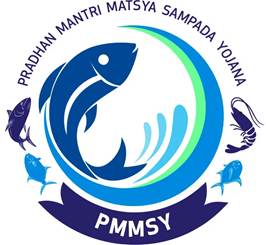Content :
- Collaborative Push for PMMSY at Inland Fisheries Meet 2025
- National Conference on Agri Stack: Turning Data into Delivery
Collaborative Push for PMMSY at Inland Fisheries Meet 2025
Context : India’s inland fisheries sector has emerged as a vital driver of rural livelihoods, food security, and export potential. The Inland Fisheries and Aquaculture Meet 2025 aimed to catalyze innovation, investment, and coordinated action to unlock its full growth potential.
Relevance : GS 3(Agriculture ,Fisheries)

Importance of the Fisheries Sector
- The sector is growing at an impressive 9% annual rate, the highest among all agri-allied sectors.
- Supports ~3 crore livelihoods, especially among rural and coastal communities.
- India has become the second-largest fish producer globally, with inland fish production increasing by 142% since 2013–14.
Government Interventions & Funding
- Major schemes include PMMSY, FIDF, PM-MKSSY, and Blue Revolution.
- ₹38,572 crore invested towards modernization, infrastructure, credit access (KCC), and inclusive growth.
- These efforts aim to promote sustainable development, self-reliance, and export readiness.
Focus Areas Identified in the Meet
- Expanding culture area from 55 to 70 lakh hectares.
- Doubling productivity from 5 to 10 tonnes/ha through technology and quality inputs.
- Promoting coldwater fisheries, saline aquaculture, ornamental fishery, and value addition.
- Boosting export potential of shrimp, trout, and processed fish products.
Technology and Innovation
- Promotion of RAS (Recirculatory Aquaculture System) and Biofloc for sustainable, high-yield aquaculture.
- Drone-based monitoring, use of digital tools, and data-driven decision-making encouraged.
- Highlighted the role of 300+ start-ups in tech innovation, processing, and post-harvest value chains.
Institutional and Policy Reforms
- Emphasis on brood banks and quality seed availability in collaboration with ICAR.
- Call for reforms in leasing and licensing policies for reservoirs, wetlands, and riverine fisheries.
- Adoption of a cluster-based approach to cover the entire value chain: from seed to market.
State-Level Coordination and Federal Synergy
- Participation from 15+ inland states and UTs.
- Encouraged alignment of state action plans with national objectives.
- Need for customized implementation, based on local aquatic resources and priorities.
Infrastructure and Market Connectivity
- Strengthening of cold storage, transport chains, and market linkages emphasized.
- Focus on balancing supply-demand, especially in high-value species like Rohu and Catla.
- Potential use of Amrit Sarovar reservoirs for inland aquaculture.
Social and Economic Impacts
- Inland fisheries seen as a lever for:
- Nutritional security (especially protein for the poor).
- Doubling farmer incomes.
- Rural entrepreneurship and economic diversification.
- Encouragement for integrating traditional knowledge with scientific innovation.
Challenges Highlighted
- Underutilization of central funding mechanisms.
- Gaps in cold chain infrastructure and export pathways.
- Need for better coordination between research bodies and implementing agencies.
- Skilling and capacity-building for traditional fishers still limited in many states.
Broader Takeaways
- Inland fisheries represent a promising model of sustainable, technology-driven, inclusive development.
- Reflects strong Centre-State cooperation, local participation, and integration of innovation with traditional livelihoods.
- Key to achieving goals of employment generation, rural resilience, and national food security.
National Conference on Agri Stack: Turning Data into Delivery
Context & Objectives
- Organized by the Ministry of Agriculture & Farmers’ Welfare to assess the progress and challenges of Agri Stack under the Digital Agriculture Mission.
- Aimed at promoting farmer-centric, transparent, and data-driven governance by integrating digital infrastructure with agricultural schemes.
Relevance : GS 3(Agriculture),GS 2(Governance)

Key Highlights
- Secretary (Agriculture) emphasized:
- Urgent need for States to link Farmer Registries with updated Records of Rights (RoR).
- Use of digital datasets for personalized scheme delivery.
- Secretary (DoLR) stressed:
- Aadhaar seeding and digital land records as critical for accurate farmer identification.
- Rural issues like declining land value and income demand better targeting of schemes.
Digital Infrastructure Push
- Integration of Farmer ID with PM-KISAN, PMFBY, KCC, etc.
- Launch of:
- Digitally Verifiable Credentials (DVCs) or Kisan Pehchan Patra for authenticated land/crop verification.
- Farmer Authorization Systems for secure data sharing.
- Unified grievance redressal portal (with OTP, multilingual, audio features).
Major Announcements
- MoUs signed with Maharashtra, Kerala, Bihar, and Odisha to boost State-level adoption.
- ₹6,000 crore SCA package:
- ₹4,000 crore for Farmer Registry & legal heir systems.
- ₹2,000 crore for Digital Crop Survey (DCS), disbursed on a first-come-first-served basis.
State Innovations Showcased
- Maharashtra: AI sandbox (Mahavistaar AI), Farmer Registry-DPE integration, MahaDBT enrolment.
- Uttar Pradesh: Integration of Agri Stack with MSP e-procurement, DCS implementation insights.
- Karnataka: Use of FRUITS with banks, disaster relief support, soil health-linked advisories.
Technology & AI Integration
- Use of remote sensing, AI/ML tools, and automated data validation to enhance accuracy.
- Launch of AI chatbot using Agri Stack and Google Gemini, supporting multilingual farmer interaction.
- AI for crop ID, facial authentication of surveyors, and backend optimization.
Challenges Identified
- Outdated tribal land records and RoR data gaps.
- Errors in crop survey geotagging/photos.
- Non-compliance with Digital Crop Survey (DCS) standards.
Long-Term Vision
- Build a Unified Farmer Service Interface (UFSI) to streamline service delivery.
- Enhance digital access to credit, crop insurance, subsidies, and advisory services.
- Ensure inclusive participation, especially for small & marginal farmers, through digital empowerment.
Broader Significance
- Agri Stack marks a shift toward evidence-based, precision agriculture governance.
- Facilitates faster, more transparent, and better-targeted interventions in rural and farm economies.
- Strengthens Centre-State digital federalism in agricultural reform implementation.



